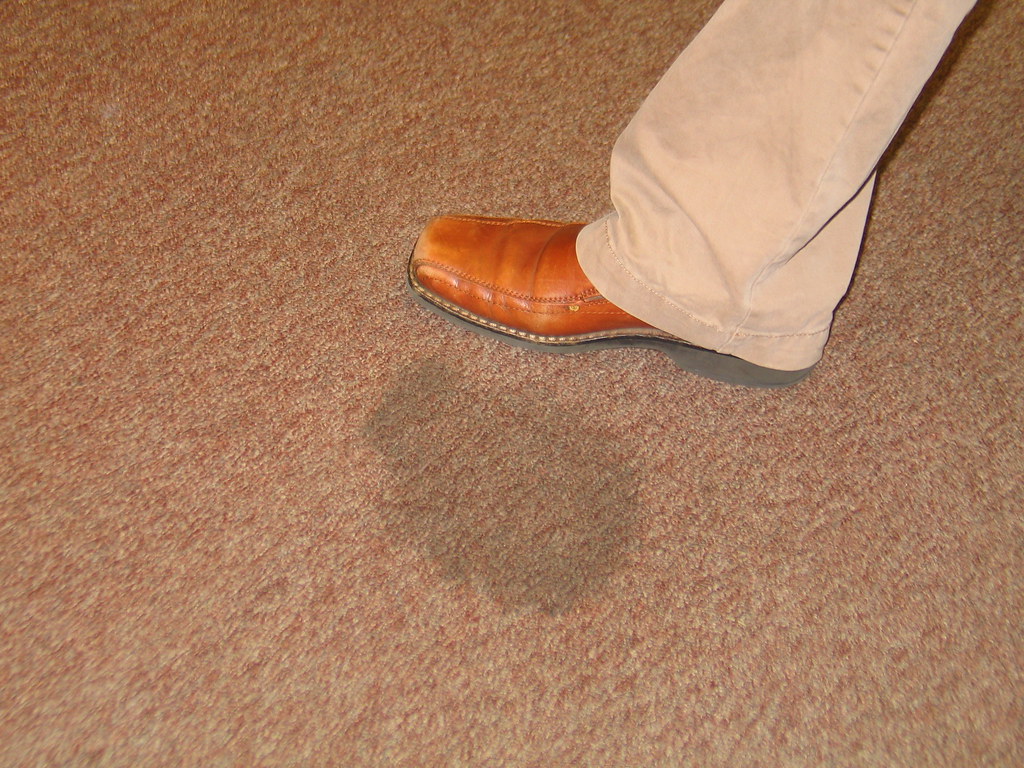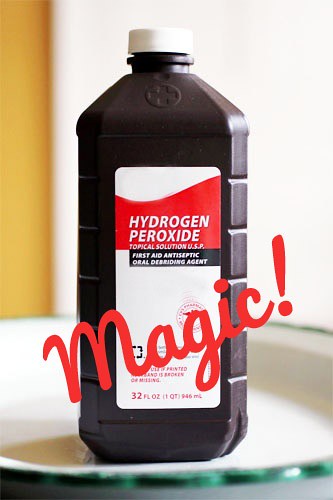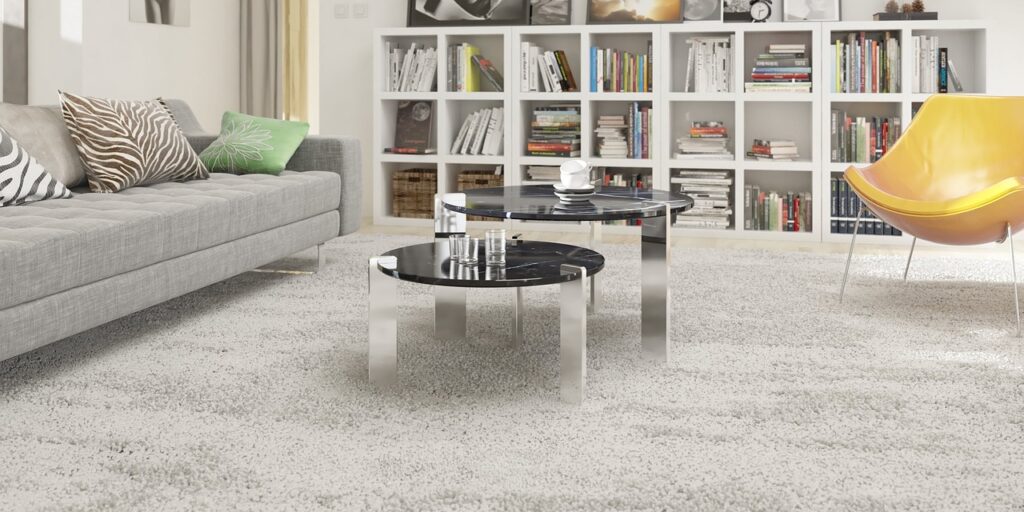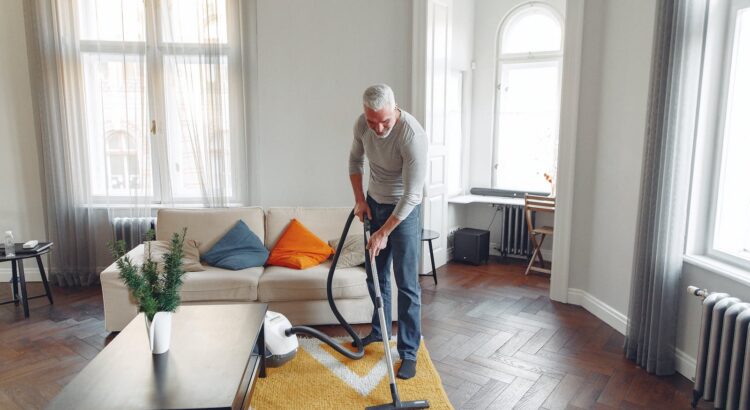
When it comes to professional carpet cleaning, most folks wonder if it’s really necessary to hire pros. Can’t we just rent one of those rug doctors and DIY? Well, sometimes a simple at-home carpet steam cleaner or carpet shampooer does the trick. But there are good reasons to call in reinforcements for a deep clean every year or so. Read on as we break down all methods of carpet cleaning, including pre-treating and spot removal, and when it pays to get experts on the scene!
Table of Contents
Know When It’s Time
Do you feel yourself getting disgusted when you see all the ground-in dirt and stains in your carpet? Or notice funky smells surfacing? Don’t ignore these clear signs that your carpets desperately need some TLC from qualified cleaning technicians.
Warning Signs
- Noticeable traffic patterns of matted carpet
- Lingering odors, even after vacuuming
- Increased allergies or asthma symptoms
- Visible dirt, stains, or tacky spots
- Simply hadn’t had a professional clean in over a year
If you checked any of those boxes, go ahead and make that call! Many pros recommend getting on a professional cleaning schedule of every 12-18 months.
Popular Cleaning Methods: Hot Water Extraction
Also referred to as “steam cleaning” or “hot water extraction.” This is the most popular and effective method used by professionals.
The process involves:
- Heavy Pre-Conditioning: A commercial-grade cleaning solution is sprayed onto carpets before the main cleaning. The chemical detergent and solvents break down dirt and oil buildup over about 10 minutes.
- Hot Water Cleaning: Carpet fibers are injected with hot pressurized water (up to 210°F) via specialty wands. The extreme heat helps loosen and dissolve grime.
- Powerful Vacuuming: Built-in suction immediately extracts the dirty water and residues back out of the carpets. Fast water volume removal is key to reducing dry time.
Pros: Superior soil and stain removal. Deodorizes. Sanitizes by killing bacteria and dust mites. Lifetime carpet brightening with truck mounted wands.
Cons: Longer dry times. Can over-wet carpet backing or subfloor if inadequate extraction. Upfront cost is higher than other methods.
Dry Foam
First a shampoo foam solution is worked into carpet piles using machinery with counter rotating brushes. The foam interacts with dirt particles and very little moisture is added. Once worked in, the foam is allowed to dry to a crystalline residue over 30-60 mins. The encapsulated dirt residue gets removed by thorough vacuuming.
Pros: No dry time. Some surface cleaning without added moisture.
Cons: Does not truly deep clean or sanitize carpet fibers. Can leave residues if not thoroughly vacuumed up.
Bonnet Cleaning

Uses an absorbent bonnet or pad underneath a rotary floor buffer. The bonnets are soaked in a mild cleaning solution then rotated over carpets to scrub and absorb dirt to the pad surface. Typically just the top carpet pile surface gets cleaned.
Pros: Fast drying time. Simple process good for periodic maintenance cleaning.
Cons: Does not deeply clean carpets or remove heavy soil buildup. Can leave residues.
Encapsulation Crystallizing
Liquid polymers are misted onto the carpet then worked in with a machine having counter rotating brush pads. The polymers crystallize around dirt particles to encapsulate them. The carpet can be immediately vacuumed after drying without sticky residues.
Pros: No lengthy drying time. Loosens some surface dirt for easier vacuuming removal later.
Cons: Does not sanitize or extract greasy soil from carpet fibers. Brush agitation only cleans surface piles.
Pre-Treating Tough Stains

Stubborn stains and high traffic areas often need some extra attention. Here are some pre-treatments pros use before the main carpet cleaning:
- White vinegar (5-30% concentration): Dissolves mineral deposits, breaks up pet urine stains. Let dwell 5-10 minutes.
- Hydrogen peroxide (3% solution): Bleaches organic stains like wine, coffee, and tomato sauce. Apply and allow to bubble for 2-3 minutes before extraction.
- Dish soap (1-2% mix): Cuts through oily dirt. Rub a small amount into stain and rinse promptly.
- Baking soda: Deodorizes and absorbs odors. Sprinkle on generously, allow to sit overnight and vacuum up residue.
- Enzymatic cleaner: Breaks down protein-based stains. Spray on, allow to sit for 5-10 minutes then blot and rinse.
These are worked into stains using stiff bristle hand brushes, left to dwell 5-10 minutes, then extracted out before regular hot water cleaning.
Spot Removal Methods
For more concentrated stain removal, technicians have a few specialty tools they’ll break out:
Portable extractors: Miniature version of the hot water wands that can target specific areas. The suctions immediately remove the dirt and liquid. Most generate 30-70 PSI.
Air movers: Quickly dry damp spots to avoid wicking stains deeper or potential mold growth. Commercial dryers move air at speeds exceeding 200 cubic feet per minute (CFM).
Scrub brushes: Help agitate stubborn, set-in stains using stiff nylon or boar bristles. May require some elbow grease!
Spot remover chemicals: Specialized stain removers like hydrogen peroxide, solvents for grease, and odor neutralizers. Always start with the gentlest option first.
Homemade Spot Cleaning Formulas for DIY

Before you call in the pros, you can try tackling stains yourself with common household ingredients. Here are some handy homemade pre-treatments:
Baking Soda
The mild abrasive powers of baking soda help lift dirt from carpet fibers. Sprinkle a generous layer over the stain and allow to sit for up to 4 hours before vacuuming up. The added benefit is it will deodorize carpet smells too.
Hydrogen Peroxide
The oxidizing bubbles can help bleach out many organic stains like coffee, wine, tomato sauce, and more by breaking up pigment molecules. Carefully pour 3% solution onto the stain and let it bubble for 2-3 minutes before blotting and rinsing.
Dish Soap & Vinegar
For oil-based stains, combine 1/2 tsp clear dish detergent with 1 cup warm water and 1 tbsp white vinegar. Mix well and sponge onto the stain. Gently blot area with clean towels to absorb. Then rinse with clear water using minimal moisture so area doesn’t get too wet.
Enzyme Cleaner
For tough protein-based stains like food residue, pet accidents, or bodily fluids, use an over-the-counter enzyme cleaner formulated specifically for digesting proteins. Carefully follow label instructions based on stain type.
When using any homemade cleaners, test on an inconspicuous area first and make sure to limit water so it doesn’t soak underneath to carpet backing or subfloor. Blot, don’t rub aggressively. If stain persists, call the pros!
DIY Isn’t Always Best
Yes, running to the store to rent a Rug Doctor seems like the cheaper and easier option. But professional hot water extraction cleans better and deeper in these ways:
- More powerful suction that rinses away more residues. Pro trucks generate vacuum lift over 100 inches of water!
- Truck mounted wands provide stronger water pressure up to 500 PSI versus 50 PSI for rental units.
- Technicians use commercial cleaning solutions much stronger than retail formulas which are restricted for home use.
- Professionals have heavy duty tools for pre-treating and spot removal like air movers and portable extractors.
Technicians also take precautions that protect your home too like corner guards, furniture pads, airflow management, and stain protectants.
Protecting Your Investment

Carpets are a big investment, so it pays to keep them looking fresh by hiring pros every year or so. Here are average costs you can expect for professional carpet cleaning:
| Cleaning Service | Average Cost |
|---|---|
| Bedroom | $50-100 |
| Hallway or Stairs | $30-60 per flight |
| Full home | $150-300 |
Rates vary based on your region, size of home, and type of carpeting. Many companies offer discounts if you sign up for recurring service.
You can also extend the life and appearance retention of your carpets by using manufacturer or installer recommended cleaning methods. This ensures you comply with warranties. Many pros offer 5-year maintenance plans or extended warranties too.
What to Expect from the Process
When pros come to clean your carpets, here is the basic timeline:
- Prep work – They’ll move and protect furniture with pads, then vacuum thoroughly with commercial uprights or canister vacs that beat any rental.
- Pre-treat – Stains and high traffic areas get special sprays tailored to the specific soiling issue. Then agitated with groomers or stiff brushes.
- Deep clean – Technician uses the hot water extraction method across all main carpet areas, working in sections. Wands attach to hoses fed by powerful truck mounted systems parked outside.
- Spot check – Crew double checks for any remaining spots using LED spotlights. They’ll use portable extractors for precision removal.
- Protect – A stain-resistant protector is misted evenly over entire carpet using pressurized spray tanks with extended hoses for full coverage.
- Dry time – High velocity air movers and dehumidifiers will run for 1-2 hours to dry carpets quickly. Carpet rakes can help lift carpet pile.
The process takes 2-4 hours depending on size of home and number of techs. Carpets are walkable immediately but full dry time is 8-12 hours on average. Powerful gear makes fast work for flawless results!
Frequently Asked Questions For Professional Carpet Cleaning
What’s the best season for carpet cleaning?
Aim for the warmer, drier spring and summer months. It allows your carpets to dry faster which prevents mold or mildew growth.
How often should you get carpets professionally cleaned?
Ideally every 12-18 months. Homes with kids or pets may need it yearly.
Do I need to be home during service?
Nope! In fact, many prefer you aren’t since they can work quicker without distractions.
Are there health benefits to professional carpet cleaning?
Absolutely! Deep cleaning removes dust mites, pet dander, mold spores, and other allergens.
How long should my carpets take to dry?
Most carpets dry within 4 to 8 hours. Pre-treated high traffic zones may take up to 24 hours. Humid weather also extends dry times.
Should I vacuum before my cleaning appointment?
Yes, to avoid getting charged an additional prep fee and achieve better results.
What’s an average carpet cleaning price per room?
For pro services expect to pay an average of $30 to $60 per room in a standard single family home. High-end wool carpeting will fall on the pricier end.
Can professional carpet cleaning remove red wine or pet urine odors?
Yes! Techs have specialty treatments and hospital-grade cleaners that can eliminate those stubborn smells for good. No need to replace the carpet (yet).
Is professional carpet cleaning safe for babies and pets?
Reputable companies only use non-toxic, green certified solutions that are completely safe once fully dried. Many provide extra fans too.
Will wet carpet cleaning damage my hardwood floors?
Not if done properly. Companies take precautions like floor pads and fans directing airflow. Moisture shouldn’t seep into wood floors.
Don’t Put It Off Any Longer
As you can see, professional carpet cleaning delivers real value – from sanitizing your home of allergens to protecting your flooring investment and keeping it looking fresh. Yes, it requires an investment of your time and money every year or so. But considering the deep cleaning power, specialized tools, and stain fighting skills the pros wield, it’s worth the cost.
Next time your carpets start looking worse for wear, don’t hesitate to call in the experts. Just be sure to choose a reputable company that has the hot water extraction equipment, knowledge, and experience to renew your carpets. They can eliminate years of built up grime and leave your floors fluffy and spotless once again.
When paired with regular maintenance like frequent vacuuming, professional hot water extraction will keep your carpets looking like new for years to come. So take advantage of this valuable service and finally get your floors super clean!
